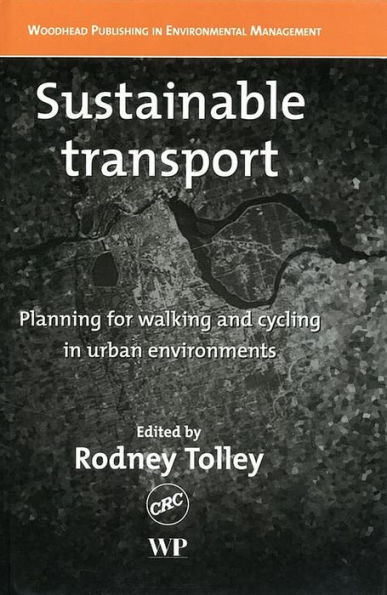5
1


eBook
$236.49
$315.00
Save 25%
Current price is $236.49, Original price is $315. You Save 25%.
Related collections and offers
236.49
In Stock
Overview
Cycling and walking are both essential components in sustainable transport strategy and are becoming an ever more important part of urban planning. There is now a wealth of international experience of how well sustainable planning works in practice and how it can be improved. With a wide range of contributions from America, Australia, Europe as well as the UK, Sustainable transport sums up many of the lessons learnt and how they can be applied in improved planning. Non-motorised transport planning depends on combining improvements to infrastructure with education.There are chapters examining both national strategies and local initiatives in cities around the world, including such topics as changes to existing road infrastructure and the integration of cycling and walking with public transport. Since education is a critical element in sustainable transport planning, contributors also consider such topics as developing healthier travel habits and ways of promoting cycling and walking as alternatives to the car.With its blend of practical experience and suggestions for improvement, Sustainable transport is essential reading for urban planners, environmental groups and those researching transport issues.
- Comprehensive handbook covering sustainable transport initiatives world wide
- Focuses on walking and cycling as alternatives to motorised transport systems
- Presents practical advice on how to encourage sustainable transport schemes

Product Details
| ISBN-13: | 9781855738614 |
|---|---|
| Publisher: | Elsevier Science |
| Publication date: | 08/29/2003 |
| Sold by: | Barnes & Noble |
| Format: | eBook |
| Pages: | 740 |
| File size: | 12 MB |
| Note: | This product may take a few minutes to download. |
About the Author
Rodney Tolley is an internationally known authority on green transport issues. He is Director of CAST (The Centre for Alternative and Sustainable Transport) at Staffordshire University, UK.
Table of Contents
Part 1 Principles: Ecological footprints and urban transportation; The relevance of climate change to future policy on walking and cycling; The role of non-motorised modes in an environmentally sustainable transport system; Walking in a historical and international context; Does anyone walk anymore? The decline of everyday walking in the UK: Explanations and policy implications; Visions for city traffic and mobility; Winning back the cities: The European experience; Formal indicators of social urban sustainability; The role of cycling for women; The potential of non-motorised transport for promoting health; The walking economy; Walking, cycling and road safety; Walking and the relationship to public transport; Perceptions of walking; Attitudes to walking and cycling; Over coming the attitude barriers to greater cycle use; Social and cultural influences on the future of walking; Cars and behaviour: Psychological barriers to car restraint. Part 2 Strategies: Infrastructure planning for cycling; Creating a better walking environment; Making pedestrian facilities more usable and safer for all; Walkable towns: The Liveable Neighbourhoods strategy; The role of pedestrian precincts in adapting city centres to new lifestyles; The safety of pedestrians and cyclists in Europe: The Dumas approach; Cycle training and promotion of cycling; Walking and cycling: What to promote where; Fundamentals of pedestrian advocacy; Strategies for behavioural change: Marketing walking and cycling; Creating supportive environments for walking as healthy physical activity; Health conscious transport planning: Intersectoral collaboration; Green modes and US transport policy: TEA-21; Bicycling in the US: Recent trends and policies; Walking and cycling for fun: urban tourism and leisure; The politics of changing to green modes. Part 3 Practice: Segregation or integration of cycling in the road system: The Dutch approach; Conserving walkable environments in Japan; Benchmarking local cycle conditions; Implementing local cycling policies in the UK; Barring the way: gated communities and walking; Promoting walking in the US: Overcoming the 'stickiness' problem; Promoting walking in the UK: Don't talk about walking!; Non-motorised transport demand management; Safer routes to Danish schools; Cycling and social inclusion. Part 4 Case studies.From the B&N Reads Blog
Page 1 of
